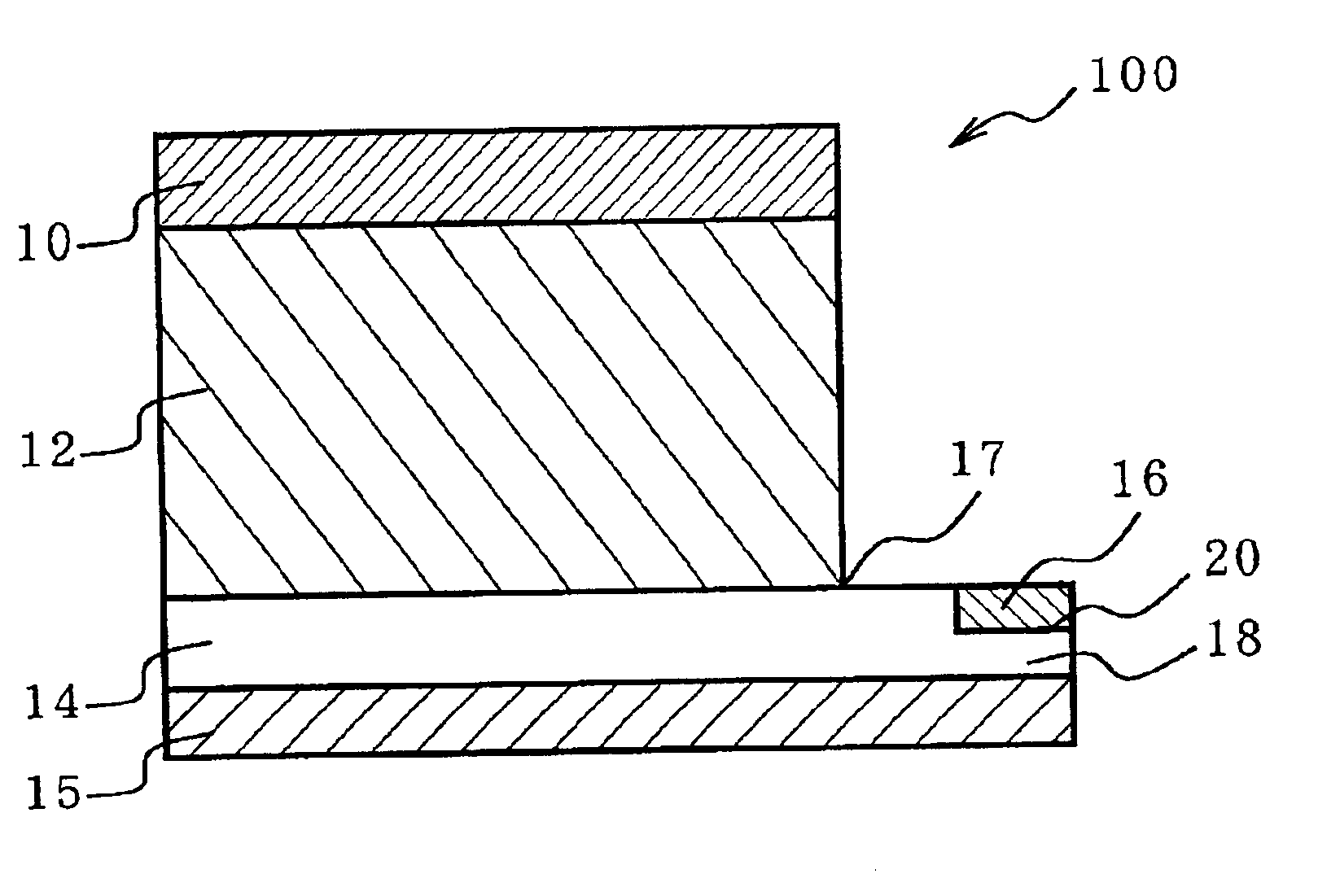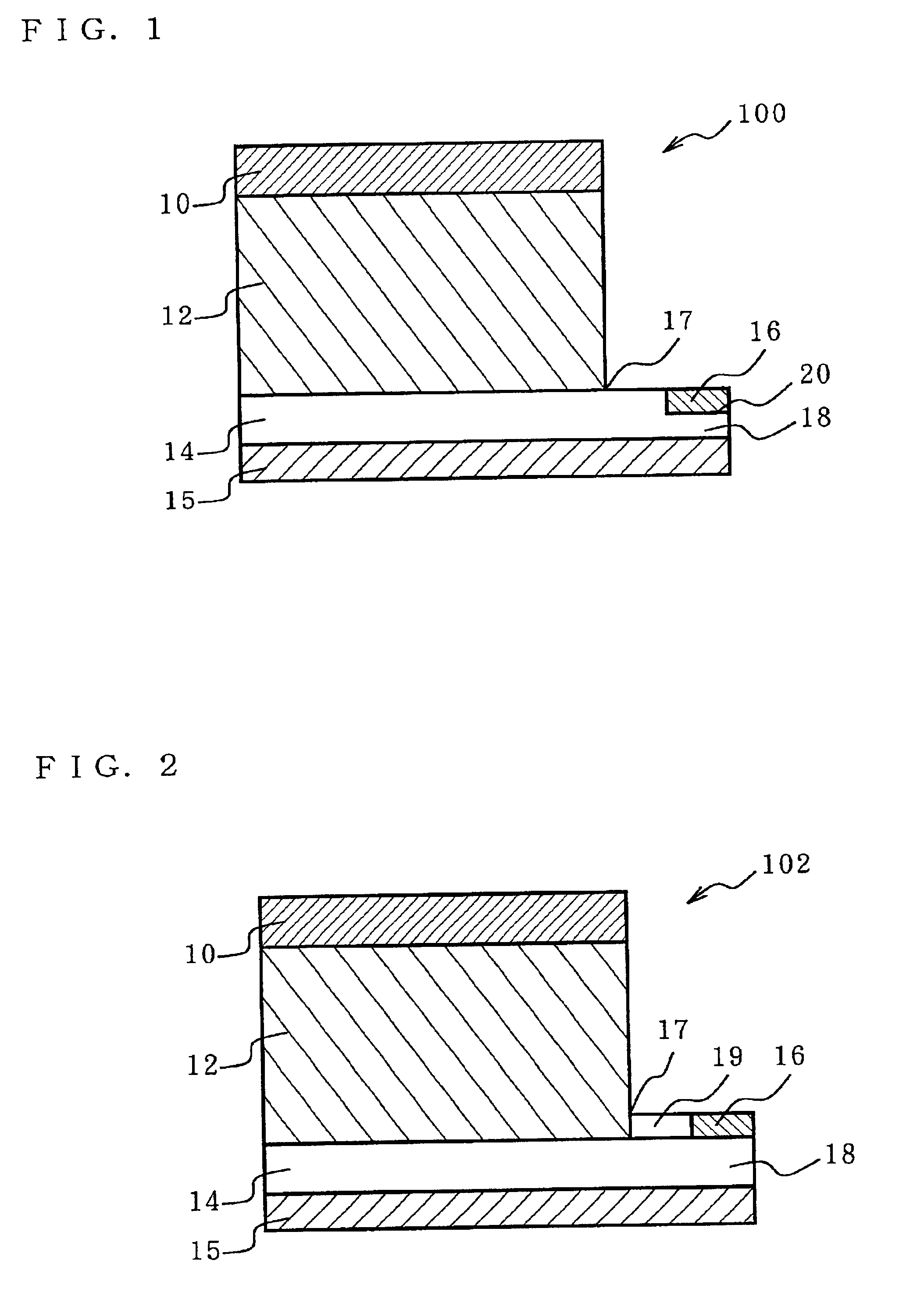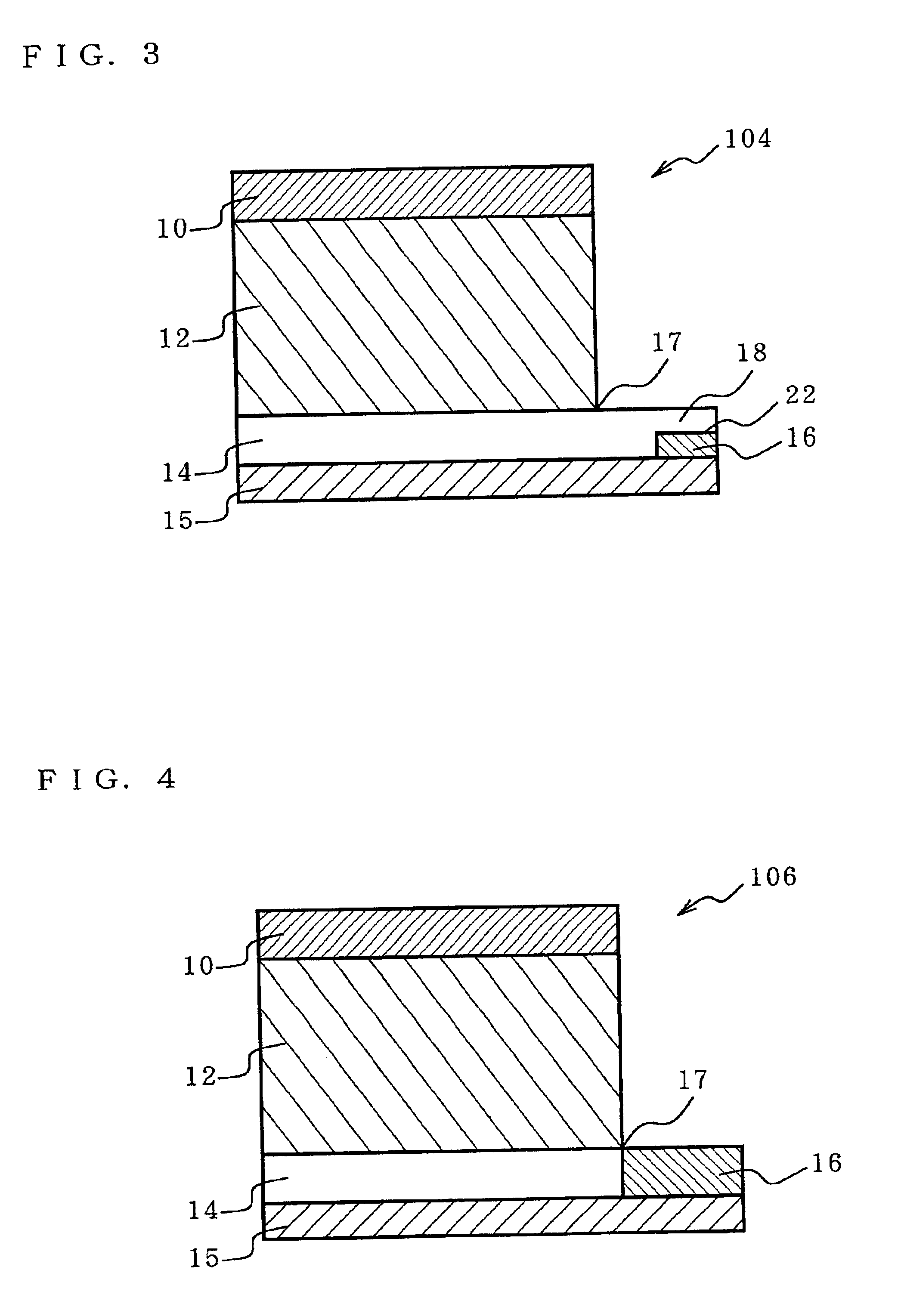Organic electroluminescence element and manufacturing method thereof
- Summary
- Abstract
- Description
- Claims
- Application Information
AI Technical Summary
Benefits of technology
Problems solved by technology
Method used
Image
Examples
example 1
[0214](1) Fabrication of Organic EL Element
[0215](i) Formation of the Cathode (Second Electrode)
[0216]A transparent glass substrate having a dimension of 1.1 mm(thickness)×200 mm (length)×200 mm (width) was ultrasonically cleaned and after drying in the N2 (nitrogen gas) environment, the glass substrate was cleaned by the use of UV (ultraviolet ray) and ozone further for 10 minutes. Then, on the cleaned glass substrate, a thin film (100 nm thick) comprising Al / Si alloy (Si concentration: 1 at. %) was formed by the use of the sputtering apparatus (available from ULVAC JAPAN, Ltd.). This Al / Si alloy thin film was patterned in lattices (line width: 20 μm; lattice pitch: 320 μm) by the use of photolithography as shown in FIG. 11(a). The construction of the configuration in which the cathode (second electrode) was electrically connected at the edge section of the semiconductor layer was intended.
[0217](ii) Formation of the Semiconductor Layer
[0218]The glass substrate on which the cathode...
example 2
[0230](1) Formation of Organic EL Element
[0231](i) Formation of the Anode (Second Electrode)
[0232]Same as Example 1, the Al / Si alloy thin film patterned in the form of lattices (line width: 20 μm; lattice pitch: 320 μm) was formed and designated it as the anode (second electrode).
[0233](ii) Formation of the Semiconductor Layer
[0234]The glass substrate with the anode formed was cleaned with argon plasma, and then, on this glass substrate, using the vacuum deposition apparatus (available from ULVAC JAPAN, Ltd.), CdS and Cu are simultaneously deposited in 30 nm film thickness to form the p-type semiconductor layer. The deposition was carried out at the vacuum of 1×10−6 Torr (1.33×10−4 Pa) and at the substrate temperature of 160° C., and Cu deposition was carried out so that the specific resistance of the semiconductor layer satisfied 2×10 Ω≠cm. The charge concentration of the semiconductor layer was measured by the four-terminal method and it was confirmed that the charge concentration...
example 3
[0242](1) Fabrication of Organic EL Element
[0243]In Example 3, effects of the organic semiconductor layer were investigated. That is, in place of the semiconductor layer comprising a combination of CdS and Cu in Example 2, a 70-nm-film thickness semiconductor layer comprising PEDOT (3,4-polyethylene dioxythiophene, available from Bayer), which is polymer indicating semiconductance, was spin-coated in the condition of the aqueous solution, and then, was vacuum-dried to form an organic EL element, with others all same as Example 2.
[0244](2) Assessment of the Organic EL Element
[0245]When DC7V voltage was applied across the cathode (first electrode) and the anode (second electrode), the 5.2 mA / cm2 current flew and green light emission which emission luminance was 180 cd / m2 was obtained via the semiconductor layer. Then, when the organic EL element was driven at constant current with the initial emission luminance set to 100 cd / m2, the 790-hour half-life was obtained. The results obtaine...
PUM
 Login to View More
Login to View More Abstract
Description
Claims
Application Information
 Login to View More
Login to View More - R&D
- Intellectual Property
- Life Sciences
- Materials
- Tech Scout
- Unparalleled Data Quality
- Higher Quality Content
- 60% Fewer Hallucinations
Browse by: Latest US Patents, China's latest patents, Technical Efficacy Thesaurus, Application Domain, Technology Topic, Popular Technical Reports.
© 2025 PatSnap. All rights reserved.Legal|Privacy policy|Modern Slavery Act Transparency Statement|Sitemap|About US| Contact US: help@patsnap.com



